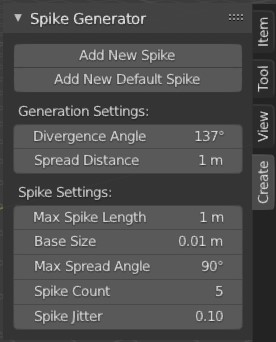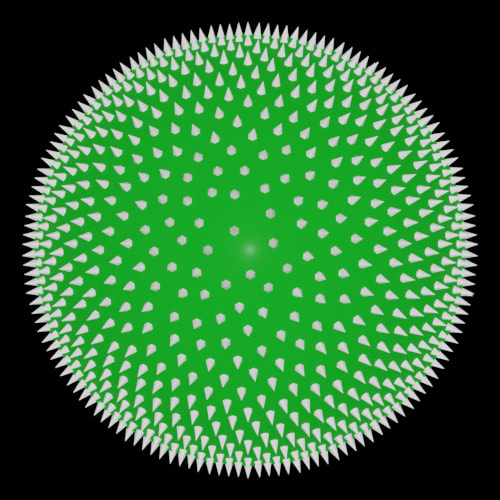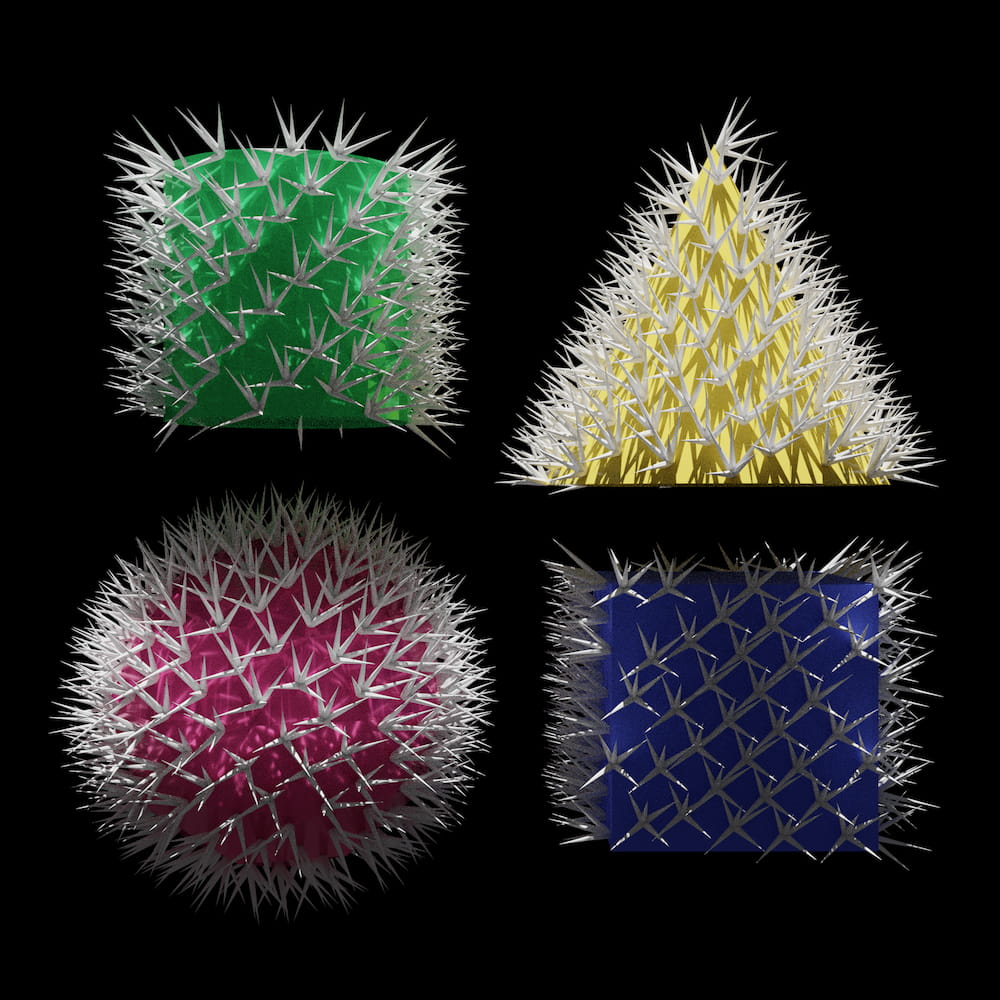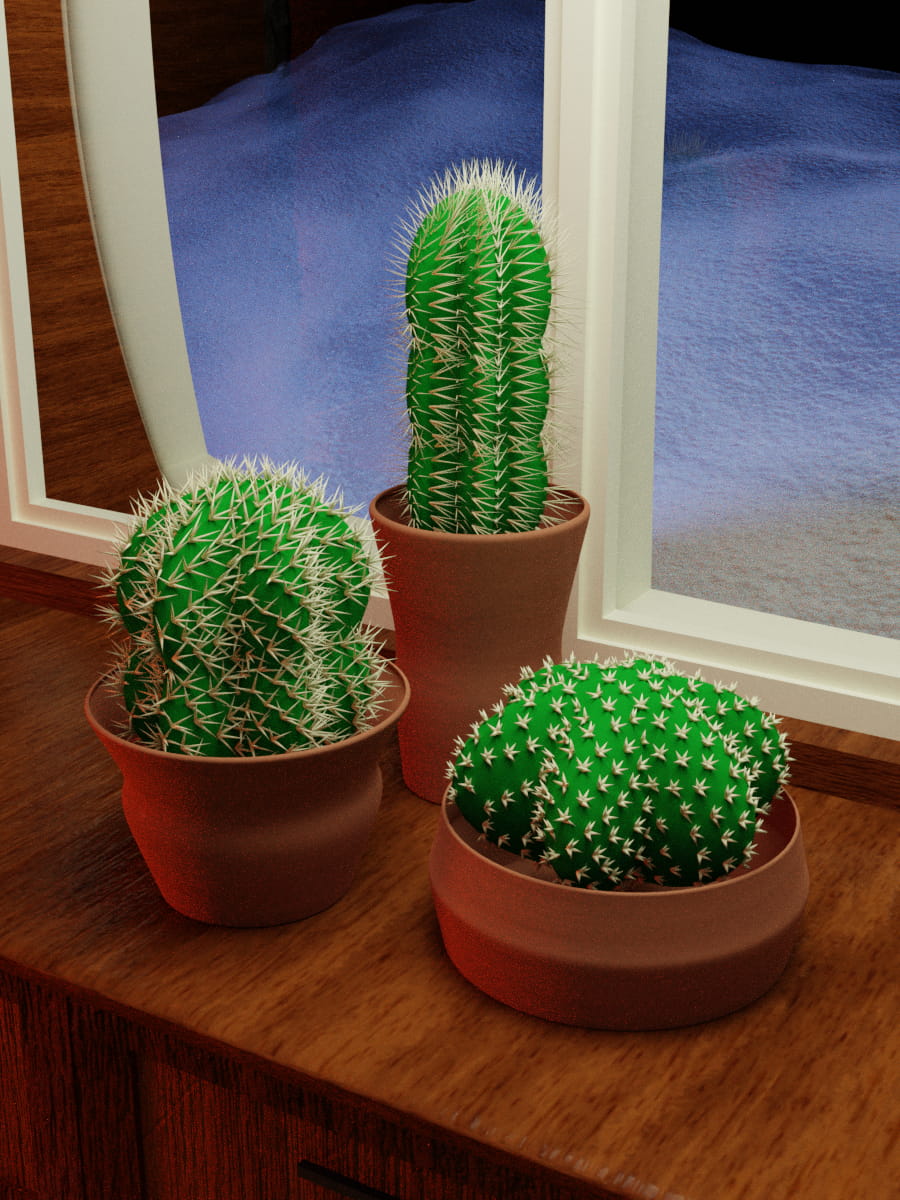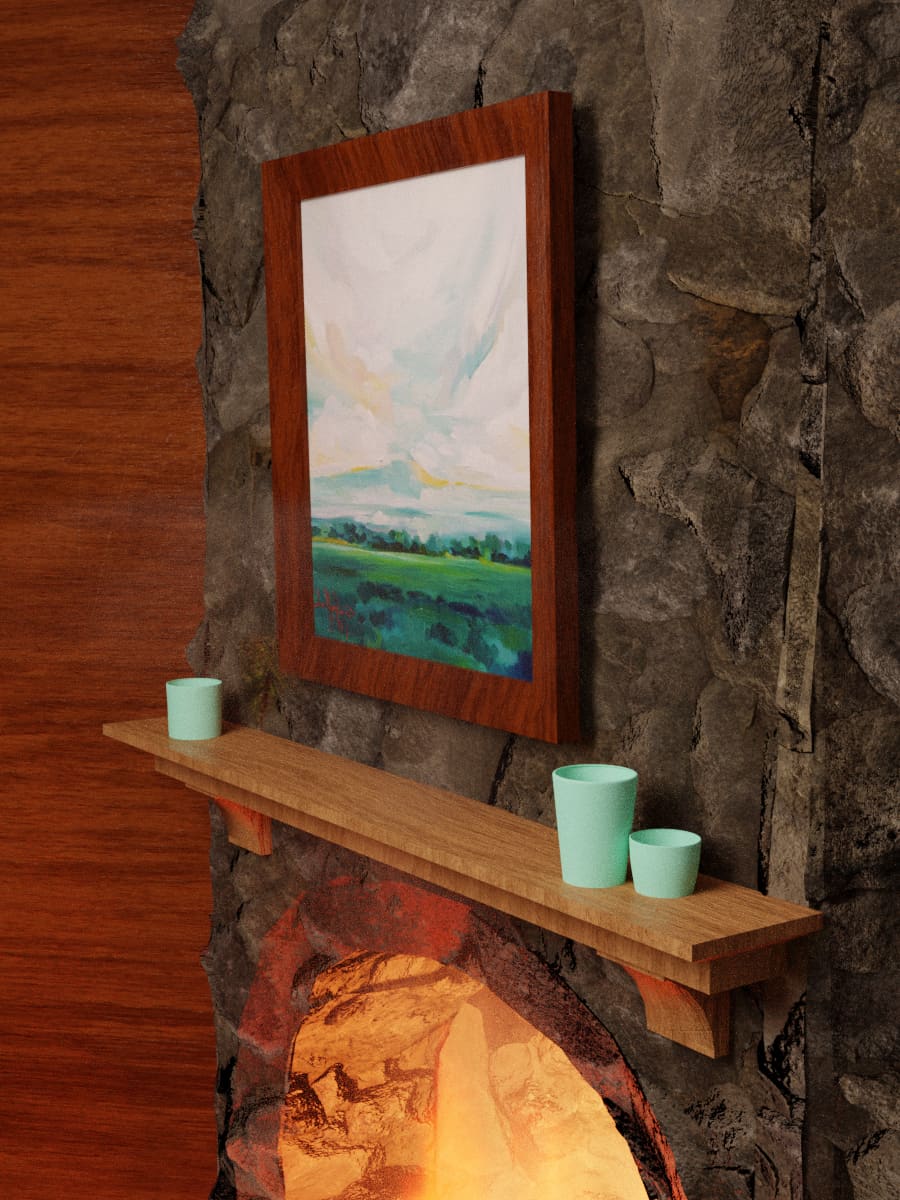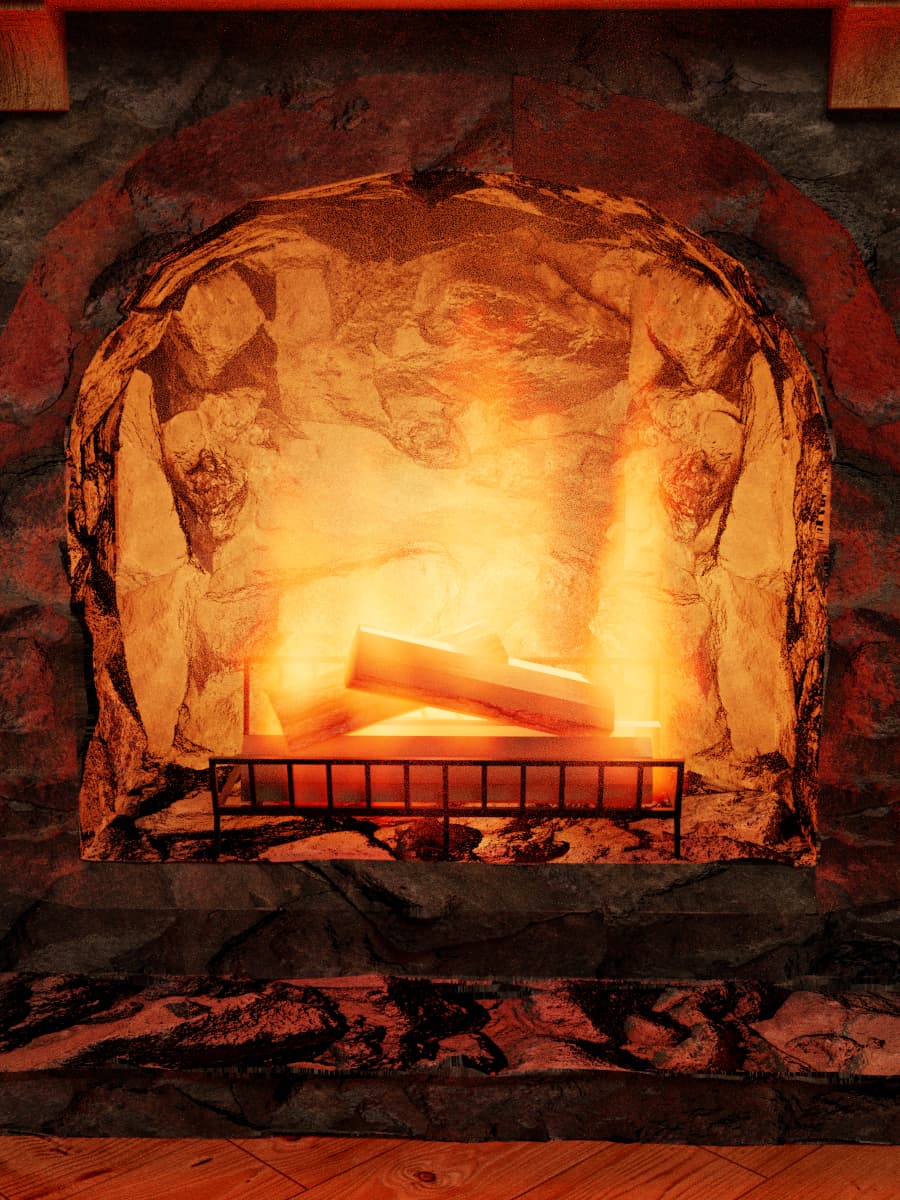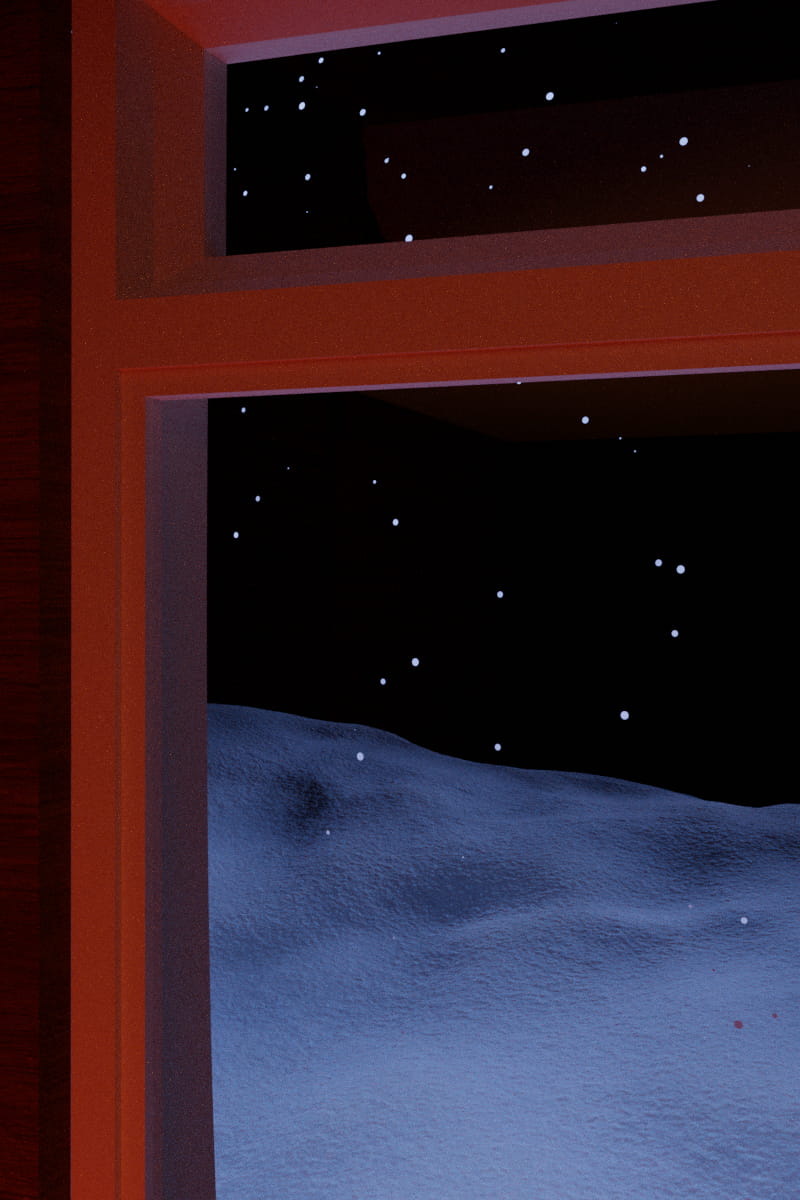Kevin Chen
SpikeGen Blender add-on
Fall 2020
tags: computer graphics
“SpikeGen,” is a Blender add-on for procedural spike generation on a mesh. With controls for length, base size, divergence angle, spread distance, and jitter, SpikeGen can emulate phyllotactic spirals found in plant leaves and arrangements of spines and glochids on cacti.
SpikeGen was inspired by the SIGGRAPH 1992 paper A collision-based model of spiral phyllotaxis.
Shown are four close-up renders from a looping indoor animation that I modeled, textured, lit, and rendered in Blender. SpikeGen was used to add spines to my partner’s procedural cactus bodies, who also procedurally generated the clay pots. I also used procedural techniques to create the fire and snow particle systems.
Final project for CPSC 479 at Yale, Advanced Topics in Computer Graphics.
